By:
TrainCoreFit
12-23-2024

The power rack (otherwise called the power confine) is one of the most significant and adaptable bits of gear that you might actually purchase for your home exercise center.
With just a power rack and a bar with loads, you can change your build, execution, and accomplish enormous steps towards your wellness objectives. With sufficient opportunity and savvy preparation, you can utilize this piece of hardware to change for as long as you can remember. A considerable lot of the most grounded people alive have procured their benefits in the straightforward, crude strength-building practices a power confine permits.
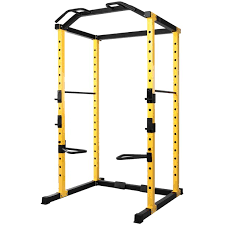 The HulkFit 1,000lbs multi-work power confines is a tremendous enhancement for their 800lbs squat rack that we canvassed in our squat rack survey and guide. This item accompanies a lot more grounded base and further developed a security that makes it an alternate monster from the past power confine we discussed. The strength and impression of this item are extraordinary, while the 1,000lbs weight rating gives a lot of additional room regardless of how weighty you’re lifting. It additionally guarantees that the distinctions that come from dynamic development are represented and guards you, in any event, when falling flat huge loads! This all comes at an extraordinary cost. Once more, we’re not going to examine the lat pulldown connection as it is a superior autonomous item and doesn’t give much in the method of center capacities for the power confine itself. The enclosure is great, the superfluous connections don’t add a lot.
The HulkFit 1,000lbs multi-work power confines is a tremendous enhancement for their 800lbs squat rack that we canvassed in our squat rack survey and guide. This item accompanies a lot more grounded base and further developed a security that makes it an alternate monster from the past power confine we discussed. The strength and impression of this item are extraordinary, while the 1,000lbs weight rating gives a lot of additional room regardless of how weighty you’re lifting. It additionally guarantees that the distinctions that come from dynamic development are represented and guards you, in any event, when falling flat huge loads! This all comes at an extraordinary cost. Once more, we’re not going to examine the lat pulldown connection as it is a superior autonomous item and doesn’t give much in the method of center capacities for the power confine itself. The enclosure is great, the superfluous connections don’t add a lot.
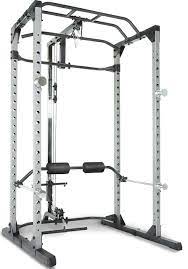 This item accompanies an assortment of choices – albeit the link pulley connection is a genuine illustration of an extra that truly doesn’t add a lot. We’ve worked with this sort of connection broadly and they’re nearly generally awful. The standard model of the 810XLT is evaluated to 800-lbs which is a sensible measure of weight rating, however not similar to others on this rundown. 800lbs of static weight is great yet consider that you will bomb weight with speed, rather than static – so a superior weight-resilience would be a decent reward. This is a very decent item for individuals who are new to weight preparation and don’t need a hard-core item. There are some cool capacities –, for example, the different draw upholds and balance out bars that are intended to fit the rear of the item. Nonetheless, this item is most certainly outmatched by others on this rundown and just stands its ground for amateurs, or those on a careful spending plan. There are a lot of enclosure connections however a significant number of them are moderately ineffectual, make the enclosure harder to utilize, and should be bought independently.
This item accompanies an assortment of choices – albeit the link pulley connection is a genuine illustration of an extra that truly doesn’t add a lot. We’ve worked with this sort of connection broadly and they’re nearly generally awful. The standard model of the 810XLT is evaluated to 800-lbs which is a sensible measure of weight rating, however not similar to others on this rundown. 800lbs of static weight is great yet consider that you will bomb weight with speed, rather than static – so a superior weight-resilience would be a decent reward. This is a very decent item for individuals who are new to weight preparation and don’t need a hard-core item. There are some cool capacities –, for example, the different draw upholds and balance out bars that are intended to fit the rear of the item. Nonetheless, this item is most certainly outmatched by others on this rundown and just stands its ground for amateurs, or those on a careful spending plan. There are a lot of enclosure connections however a significant number of them are moderately ineffectual, make the enclosure harder to utilize, and should be bought independently.
 This item imitates the best and most noticeably terrible parts of the HulkFit rack. The advantages are in the essentially successful plan of the rack with compelling plan choices and attention on the nuts and bolts. Be that as it may, the issues on quality confirmation and the nature of execution are frequently poor. This doesn’t show as a helpless arrangement, yet rather rehashed instances of broad interior rusting. This could be because of helpless treatment or helpless capacity/delivering rehearses. This is a significant worry to the primary trustworthiness of this item, which essentially changes the first weight rating and could truly debase the general item. This isn’t what you anticipate from a huge buy like this, particularly since the cost of this item is higher than others we’ve examined so far on this rundown.
This item imitates the best and most noticeably terrible parts of the HulkFit rack. The advantages are in the essentially successful plan of the rack with compelling plan choices and attention on the nuts and bolts. Be that as it may, the issues on quality confirmation and the nature of execution are frequently poor. This doesn’t show as a helpless arrangement, yet rather rehashed instances of broad interior rusting. This could be because of helpless treatment or helpless capacity/delivering rehearses. This is a significant worry to the primary trustworthiness of this item, which essentially changes the first weight rating and could truly debase the general item. This isn’t what you anticipate from a huge buy like this, particularly since the cost of this item is higher than others we’ve examined so far on this rundown.
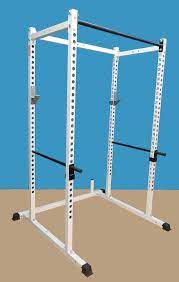 We love the essential, central methodology that the TDS power confine takes, offering a viable item with none of the shocking QA or assembling issues we’ve seen up until now. This item gives the authoritative straightforward, viable, severely solid power confine that we’ve been searching for up until now. It is appraised for 1,050lbs without any issues, with additional security highlights including locking handles on J-snares and strong wellbeing bars to help immense loads. The expansion of a well-knurled jawline-up bar is an extraordinary option in contrast to the smooth bars regularly found on different items. It gives a grippy, very much planned surface for pull-ups that is effortlessly incorporated into the general plan. The just issues we’ve truly experienced with this item are uncommon QA issues –, for example, openings that are not well-fitted to the self-locking pins or helpless delivery choices (which could be because of maker obligation).
We love the essential, central methodology that the TDS power confine takes, offering a viable item with none of the shocking QA or assembling issues we’ve seen up until now. This item gives the authoritative straightforward, viable, severely solid power confine that we’ve been searching for up until now. It is appraised for 1,050lbs without any issues, with additional security highlights including locking handles on J-snares and strong wellbeing bars to help immense loads. The expansion of a well-knurled jawline-up bar is an extraordinary option in contrast to the smooth bars regularly found on different items. It gives a grippy, very much planned surface for pull-ups that is effortlessly incorporated into the general plan. The just issues we’ve truly experienced with this item are uncommon QA issues –, for example, openings that are not well-fitted to the self-locking pins or helpless delivery choices (which could be because of maker obligation).
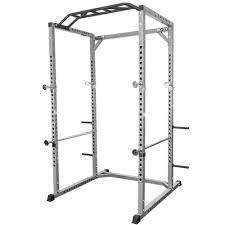 This is a re-visitation of the standard however unremarkable 800lbs weight limit, considerably more so because the 800lbs rating is just for the wellbeing bars. The “bar gets” are just evaluated for 500-650lbs, which is idiotically low. This is a critical minimization from different items on this rundown and truly falls beneath the standard set by the TDS power confine recently talked about. This is an extremely conventional-looking item from Valor that does the occupation for those with more vulnerable legs, yet certainly doesn’t give a critical motivation to buy when contrasted with different items on this list. The power rack with link hybrid is perhaps the biggest contraption we’ve at any point seen, and the links keep on being the inferior quality connection we’d prefer to keep away from. They’re likewise mysteriously positioned behind the rack which makes them almost difficult to use for something besides double stack twisting and requires the rack to be put in the focal point of your home exercise center. Absurd!
This is a re-visitation of the standard however unremarkable 800lbs weight limit, considerably more so because the 800lbs rating is just for the wellbeing bars. The “bar gets” are just evaluated for 500-650lbs, which is idiotically low. This is a critical minimization from different items on this rundown and truly falls beneath the standard set by the TDS power confine recently talked about. This is an extremely conventional-looking item from Valor that does the occupation for those with more vulnerable legs, yet certainly doesn’t give a critical motivation to buy when contrasted with different items on this list. The power rack with link hybrid is perhaps the biggest contraption we’ve at any point seen, and the links keep on being the inferior quality connection we’d prefer to keep away from. They’re likewise mysteriously positioned behind the rack which makes them almost difficult to use for something besides double stack twisting and requires the rack to be put in the focal point of your home exercise center. Absurd!
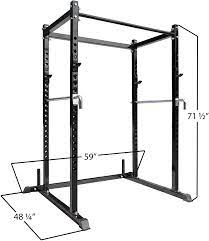 This is a stripped-down power confine and in that exists the best and most noticeably awful things about this item. From one viewpoint, there’s very little that can turn out badly and the actual item is both hard-wearing and stable contrasted with some items on this rundown. Then again, it doesn’t stir things up and is most all-around respected for being a straightforward and utilitarian piece of exercise center gear. The rating for this item is only horrendous at 700lbs of static weight, which is higher than the bar-gets of different items. This could be because of the inferior quality J-snares, as the actual casing is delivered from steel and 11-measure, creating great thickness. This is certainly one of the lighter items in the Titan T-2 territory and we’re persuaded that this lightweight configuration is a more practical option in contrast to the Valor or Powerline choices, regardless of an ostensibly more regrettable weight rating. We’re not saying the rating isn’t right, yet we trust this rack more.
This is a stripped-down power confine and in that exists the best and most noticeably awful things about this item. From one viewpoint, there’s very little that can turn out badly and the actual item is both hard-wearing and stable contrasted with some items on this rundown. Then again, it doesn’t stir things up and is most all-around respected for being a straightforward and utilitarian piece of exercise center gear. The rating for this item is only horrendous at 700lbs of static weight, which is higher than the bar-gets of different items. This could be because of the inferior quality J-snares, as the actual casing is delivered from steel and 11-measure, creating great thickness. This is certainly one of the lighter items in the Titan T-2 territory and we’re persuaded that this lightweight configuration is a more practical option in contrast to the Valor or Powerline choices, regardless of an ostensibly more regrettable weight rating. We’re not saying the rating isn’t right, yet we trust this rack more.
With a power enclosure, free weight, and a few plates you can drastically change your constitution and execution. This is a focal point for any balanced home rec center and ought to be the main concern. Assuming that you’re hoping to begin with a home rec center, you can get a top-notch power to confine under $500. That has been our concentrate today and it has driven us to suggest the TDS Power Cage – effectively the best item on this rundown. This item gives a huge assortment of advantages. It has the best weight resistance, close by a top-notch work with strong backings and strong equipment that accompanies extra wellbeing highlights, for example, hand-locks to forestall slipping and harm. This addresses the absolute best of the financial plan, at-home power enclosures and we couldn’t look for a superior item. No ifs, and or buts, the TDS Power confine is the best power rack available and the reasonable decision for your money!
This might come as a shock at first, but investing in a garage gym saves money in the long run. Yes, there is certainly a pretty hefty upfront cost to building a garage gym, but you will never have to pay for a gym membership again. The typical box membership costs anywhere from $175 – $250 per month.
You will need at least twenty-four inches of depth in front of the power rack, so you have enough room to set up barbells or pull-up bars. The same area is needed behind the rack for spotters and added room to add plates to your barbell.
The short answer is – most power racks SHOULD be permanently secured to the ground. The reason is so that the unit does not move while it’s being used. Although power racks are very heavy and usually quite tall – the movement of the heavyweights will tend to shift the rack inch by inch away from its original spot.
Because if you want to use the pull-up bar up top for a full range of motion pulls, you’ll need some clearance between the top of the rack and the ceiling to avoid smacking your head at the top of each rep! Most power racks clock in at a little over 80″, or somewhere around 7 feet, tall.
A power rack is a great tool because it allows you to lift heavy weights safely. Unlike traditional machines in the gym, the power rack is extremely versatile. You can use it for back squats, front squats, shoulder press, deadlifts, bench press, and heavy rows.
If you aren’t dropping your bar or lifting with metal plates, this is all you need. There’s no need for a 4′ x 8′ platform for most lifters. Again, if you are pulling a ton of weight, or are regularly dropping the bar, a platform is the way to go.
Table of Contents